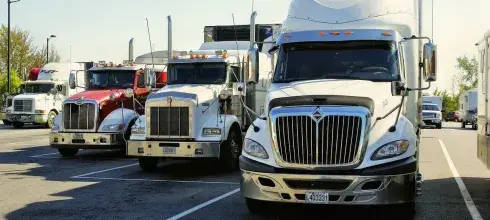Choosing between door-to-door and terminal car transport represents one of the most important service decisions customers face when planning to transport car to another state or ship my car to another state through professional auto transport services USA. Each option offers distinct advantages and limitations that affect convenience, cost, timing, and overall customer experience throughout the shipping process. Understanding the comprehensive pros and cons of both service types helps customers make informed decisions that align with their specific needs, budgets, and circumstances. Professional car shipping companies typically offer both options, but the choice significantly impacts everything from initial coordination through final delivery, making this decision crucial for achieving optimal transport experiences. This detailed comparison examines every aspect of door-to-door versus terminal service to help customers select the option that best serves their unique requirements.
Understanding Door-to-Door Car Transport
Door to door auto transport provides comprehensive convenience by handling vehicle pickup and delivery at customer-specified locations, eliminating the need for customers to travel to terminals or coordinate alternative transportation arrangements. This premium service represents the gold standard for customer convenience in the auto transport industry.
Service scope includes pickup from residential addresses, business locations, or other customer-specified sites, followed by direct delivery to the destination address without requiring customers to visit transport facilities. Professional providers handle all logistics coordination while customers simply provide access to their vehicles.
Operational procedures involve transport trucks traveling directly to customer locations for pickup and delivery operations, requiring adequate access for large carriers that typically measure 75-80 feet in length with height requirements of 13-14 feet clearance.
Customer responsibilities are minimized with door-to-door service, as providers handle route planning, scheduling coordination, and logistics management while customers need only ensure vehicle accessibility and availability during scheduled windows.
Service integration with residential and business environments requires professional providers who understand access challenges, parking restrictions, and coordination requirements typical of diverse pickup and delivery locations.
Premium positioning reflects the convenience and comprehensive service delivery that door-to-door transport provides, typically commanding higher pricing that reflects the additional logistics coordination and operational complexity involved.
Advantages of Door-to-Door Service
Maximum convenience represents the primary advantage of door-to-door transport, eliminating travel requirements to terminals while providing comprehensive service that handles all logistics coordination on behalf of customers.
Time savings prove substantial for busy customers who avoid terminal trips that could require hours of travel time, particularly significant for customers in rural areas or those located far from terminal facilities.
Stress reduction benefits customers through simplified coordination that eliminates multiple moving parts and logistics challenges, particularly valuable during complex relocations or busy periods when time and energy are at premium.
Accessibility advantages serve customers with mobility limitations, lack of alternative transportation, or scheduling constraints that make terminal visits difficult or impossible to coordinate effectively.
Comprehensive service delivery includes all aspects of transport logistics from initial pickup through final delivery, providing unified experience that eliminates coordination between multiple service providers or transportation methods.
Professional coordination handles all logistics details including route planning, scheduling optimization, and communication management, allowing customers to focus on other aspects of their relocations or vehicle transactions.
Disadvantages of Door-to-Door Service
Higher costs represent the primary disadvantage of door-to-door service, typically adding $50-200 to transport expenses compared to terminal alternatives, reflecting the additional operational complexity and logistics coordination required.
Access limitations may prevent service to locations that cannot accommodate large transport trucks due to narrow streets, low overhead clearances, weight restrictions, or other physical constraints that make carrier access impossible.
Scheduling constraints can be more complex for door-to-door service as carriers must coordinate multiple pickup and delivery locations along their routes, potentially creating longer windows or greater scheduling uncertainty.
Rural challenges include increased costs and potential service limitations for customers in remote areas where carrier access may be difficult or where additional mileage significantly impacts operational efficiency.
Weather dependency affects door-to-door service more significantly than terminal alternatives, as residential locations may have access issues during adverse weather conditions that don't affect professional terminal facilities.
Liability considerations include potential property damage from large trucks accessing residential areas, though professional carriers maintain insurance coverage and exercise appropriate caution during operations.
Understanding Terminal Car Transport
Terminal car transport utilizes designated facilities where customers deliver and retrieve their vehicles, enabling carriers to operate from centralized locations that optimize efficiency while reducing operational costs and service complexity.
Facility features include secure, staffed locations with professional vehicle handling capabilities, inspection procedures, and storage systems designed specifically for automotive transport operations.
Service model requires customers to coordinate vehicle drop-off at origin terminals and pickup from destination terminals, typically located in major metropolitan areas or along primary transportation corridors.
Operational efficiency results from carriers handling multiple vehicles at centralized locations rather than traveling to numerous individual addresses, creating cost savings that benefit customers through reduced pricing.
Professional staffing at terminals includes trained personnel who specialize in vehicle handling, inspection procedures, and customer service, providing expertise and consistency in service delivery.
Geographic coverage through terminal networks enables service to areas that might be challenging for door-to-door operations while maintaining professional service standards and security.
Advantages of Terminal Service
Cost savings represent the primary advantage of terminal service, typically reducing transport costs by $50-200 compared to door-to-door alternatives through operational efficiencies that carriers pass along to customers.
Enhanced security features at professional terminals include gated facilities, surveillance systems, 24-hour monitoring, and trained security personnel that may provide superior protection compared to residential pickup and delivery locations.
Flexible timing options allow customers to drop off and retrieve vehicles according to their schedules within terminal operating hours, providing control over timing that may not be available with door-to-door scheduling coordination.
Professional handling by trained terminal staff ensures consistent vehicle care and inspection procedures performed by personnel who specialize in automotive transport rather than general truck drivers managing logistics.
Weather independence through covered facilities and professional access roads means terminal operations typically continue during adverse weather conditions that might affect residential door-to-door service.
Efficient processing at terminals enables faster vehicle handling and documentation procedures through standardized systems and dedicated staff, potentially reducing total transport time.
Disadvantages of Terminal Service
Convenience reduction requires customers to arrange transportation to and from terminal locations, potentially involving additional travel time, coordination, and expense that eliminate some transport cost savings.
Travel requirements may be substantial for customers located far from terminal facilities, particularly challenging for rural customers or those without convenient access to alternative transportation.
Additional coordination involves managing timing for both drop-off and pickup activities, requiring customers to plan around terminal hours and availability rather than their preferred scheduling.
Limited terminal locations may not serve all geographic areas effectively, potentially requiring customers to travel significant distances to access terminal facilities.
Scheduling rigidity around terminal operating hours may not accommodate customer preferences or emergency situations that require flexibility beyond standard business hours.
Storage concerns include potential fees for vehicles remaining at terminals beyond designated periods, and exposure to facility conditions that may differ from door-to-door transport protection.
Cost Comparison Analysis
Door-to-door pricing typically ranges from $50-200 above terminal service costs, with specific premiums varying based on distance from major routes, accessibility challenges, and regional market conditions.
Terminal service savings result from operational efficiencies including consolidated pickup and delivery operations, reduced driver time, and optimized route planning that enable carriers to offer competitive pricing.
Value assessment should consider total costs including alternative transportation to terminals, time investment, and convenience factors that may justify door-to-door premiums for many customers.
Distance factors affect cost differences, with door-to-door premiums often representing smaller percentages of total costs for longer routes while having greater impact on shorter regional transport.
Accessibility impacts cost variations, with door-to-door service commanding higher premiums for difficult-access locations while terminal service maintains consistent pricing regardless of customer location.
Market conditions influence pricing for both service types, with competitive factors and seasonal demand affecting the cost differential between door-to-door and terminal options.
Geographic and Accessibility Considerations
Urban accessibility generally favors door-to-door service in metropolitan areas where terminal locations may be readily available but door-to-door access remains feasible for most residential and business locations.
Rural considerations often favor terminal service for customers located far from major transportation routes where door-to-door service may command significant premiums or present operational challenges.
Terrain factors affect both service types differently, with door-to-door facing challenges from narrow roads or difficult access while terminals may not be available in all geographic regions.
Weather considerations may favor terminal service in areas prone to severe weather where professional facilities provide more reliable access than residential locations during adverse conditions.
Infrastructure limitations including weight restrictions, height clearances, or road conditions may prevent door-to-door service while terminal facilities are designed to accommodate large transport vehicles.
Regional availability of terminal facilities varies significantly across different areas of the country, with some regions offering excellent terminal coverage while others have limited options.
Timing and Scheduling Factors
Door-to-door scheduling provides flexibility within pickup and delivery windows but requires coordination among multiple locations that may affect overall transport timing.
Terminal scheduling offers control over drop-off and pickup timing within facility hours but requires customers to adapt their schedules to terminal availability and operating procedures.
Transit time differences may favor terminal service through more efficient carrier operations, though door-to-door service eliminates customer travel time to terminals.
Coordination complexity varies between service types, with door-to-door requiring carrier route optimization while terminal service demands customer coordination with facility schedules.
Buffer planning should account for different timing variables, with door-to-door facing potential access delays while terminal service may involve waiting periods during busy operational times.
Emergency flexibility may favor door-to-door service for urgent situations where terminal hours or availability could create complications for time-sensitive transport needs.
Service Quality and Security Comparison
Professional handling standards apply to both service types through trained personnel, though terminal staff may offer specialized expertise while door-to-door drivers provide personalized attention.
Security features differ significantly, with terminals offering comprehensive facility security while door-to-door service relies on vehicle security during transport with temporary exposure during loading and unloading.
Inspection procedures at terminals provide standardized, detailed vehicle condition documentation while door-to-door inspections depend on driver expertise and available time at customer locations.
Documentation quality may favor terminal service through specialized staff and standardized procedures, though professional door-to-door providers maintain equivalent documentation standards.
Insurance coverage applies equally to both service types, though claim procedures may differ based on where damage occurs and the documentation available from each service environment.
Customer interaction varies between impersonal terminal processing and personalized door-to-door service, affecting overall customer experience and satisfaction levels.
Cross Country Car Shipping Considerations
Long-distance transport may favor door-to-door service for customers managing complex cross-country relocations where terminal visits would add significant complexity to already challenging logistics.
Terminal networks along cross-country routes may provide cost-effective alternatives for customers comfortable with coordination requirements, particularly in major metropolitan areas with convenient terminal access.
Time zone coordination affects both service types during cross-country transport, with door-to-door requiring scheduling across multiple zones while terminal service allows customer control over timing.
Regional terminal availability varies along cross-country routes, with some areas offering excellent facilities while others may have limited terminal options that affect service viability.
Cost optimization for long-distance transport may favor terminal service where cost differentials represent smaller percentages of total transport expenses.
Convenience factors become magnified for cross-country moves where customers may be traveling themselves and unable to coordinate terminal visits effectively.
Special Circumstances and Considerations
Military car shipping often benefits from door-to-door service due to deployment schedules and base access requirements that may complicate terminal coordination, though some military installations offer terminal-like facilities.
Corporate relocations may prefer door-to-door service for employee convenience while potentially negotiating volume discounts that offset premium pricing through comprehensive corporate transport programs.
Seasonal car transport patterns may affect service choice, with terminal service offering more predictable scheduling during peak periods while door-to-door provides flexibility during off-season transport.
Luxury vehicle transport typically utilizes door-to-door service for enhanced security and personalized handling that matches customer expectations for high-value automobile care.
Multiple vehicle transport may benefit from terminal coordination for efficient processing of several vehicles, though door-to-door service provides superior convenience for busy customers managing complex logistics.
Emergency transport situations often require door-to-door service for maximum flexibility and rapid response capabilities that terminal scheduling might not accommodate effectively.
Making the Right Choice for Your Needs
Decision factors should include budget considerations, convenience priorities, timing requirements, geographic location, and personal preferences that determine which service type provides optimal value for specific circumstances.
Budget optimization may favor terminal service for cost-conscious customers willing to coordinate terminal visits, while convenience priorities may justify door-to-door premiums for busy professionals or complex relocations.
Professional guidance from experienced car shipping companies helps customers understand how service choices affect their specific situations while providing realistic assessments of costs, timing, and logistics requirements.
The best auto transport companies offer both service options while providing honest recommendations based on customer circumstances rather than pushing higher-priced alternatives unnecessarily.
Service customization may enable hybrid approaches where door-to-door pickup combines with terminal delivery, or vice versa, providing optimized solutions for customers with asymmetric needs at origin and destination.
Quality focus should prioritize reputable providers regardless of service type selection, as professional expertise and reliable service delivery matter more than specific service models for achieving successful transport experiences.
Understanding the comprehensive pros and cons of door-to-door versus terminal car transport enables informed decisions that align service selection with customer priorities, circumstances, and expectations for optimal transport experiences that meet both practical needs and personal preferences.
FAQs: Choosing Between Door-to-Door and Terminal Car Transport
What is the difference between door-to-door and terminal car transport?
Door-to-door transport picks up and delivers your vehicle as close to your address as possible. Terminal transport requires you to drop off and pick up at a designated location.
What are the advantages of door-to-door car shipping?
It’s convenient, saves time, and eliminates the need to travel to a terminal. It’s ideal for busy individuals or those with limited mobility.
Are there downsides to door-to-door transport?
It can be more expensive, and large carriers might not access tight or restricted residential areas, requiring a nearby meeting point.
What are the benefits of terminal-to-terminal car transport?
It’s often more affordable and may offer flexible drop-off and pickup schedules. It’s good for people who live near major transport hubs.
Is one option safer than the other?
Both are safe when using a reputable transporter. However, door-to-door often reduces the risk of damage during extra loading or storage at terminals.








